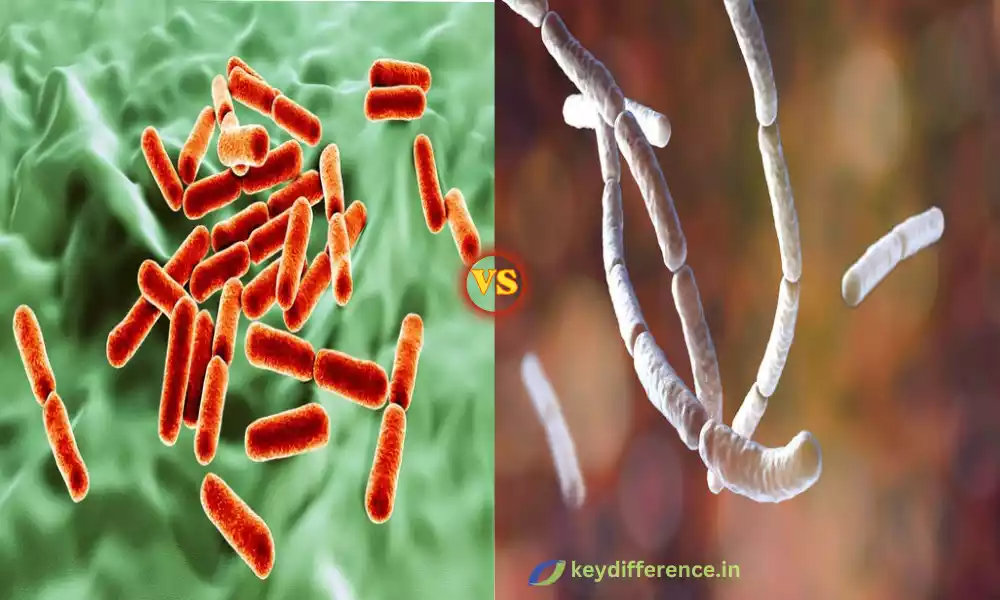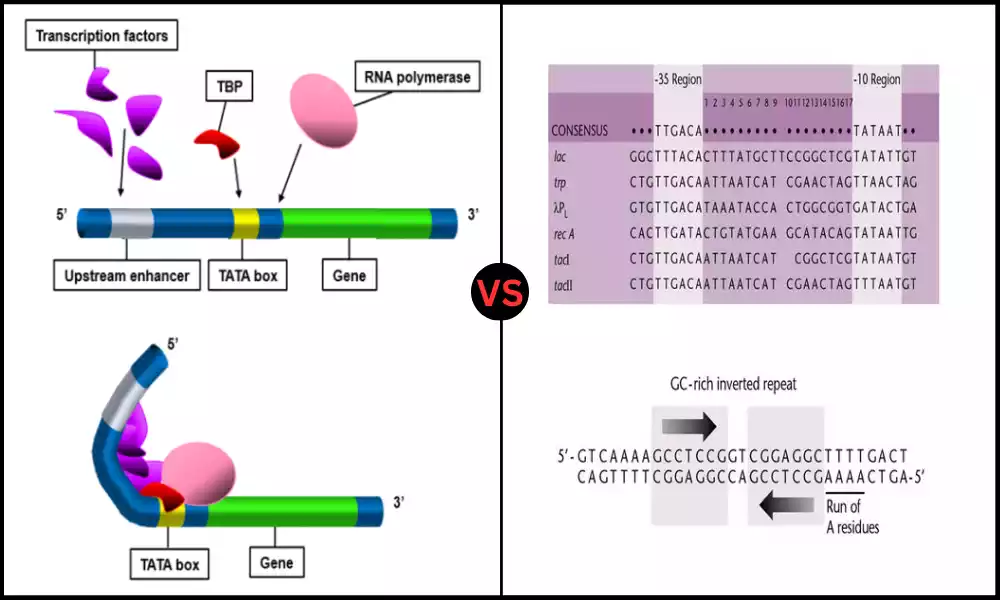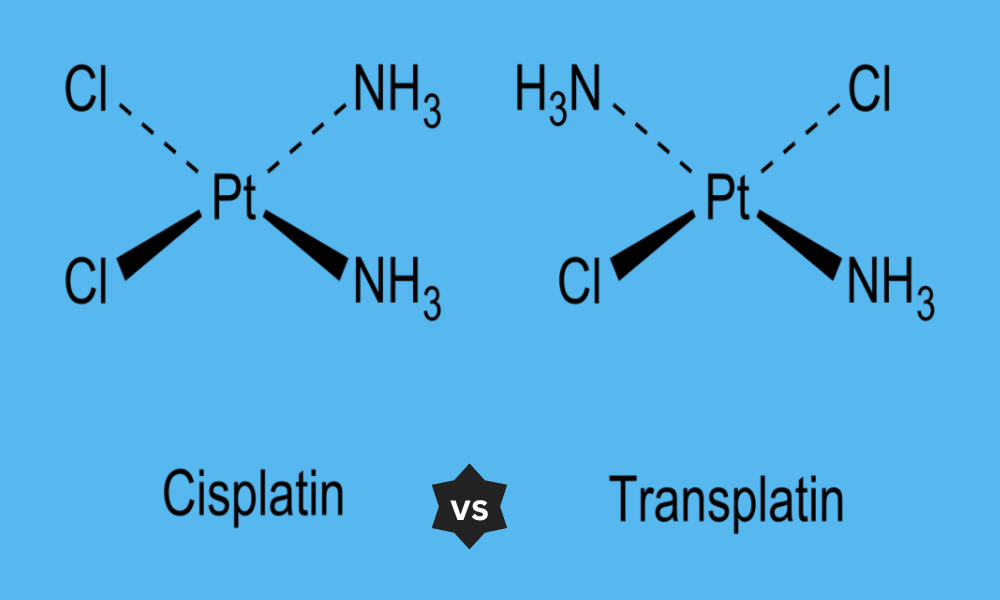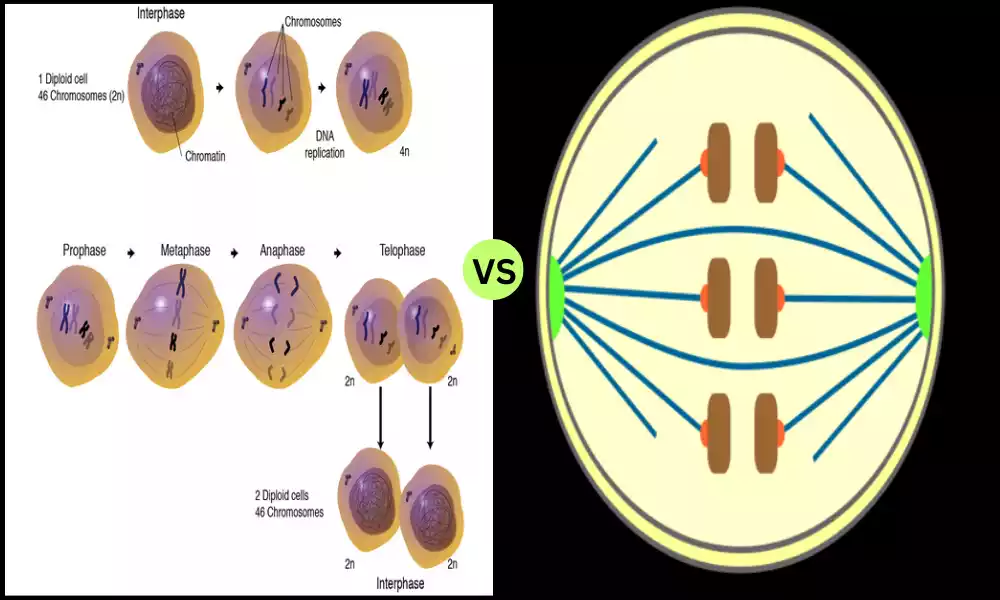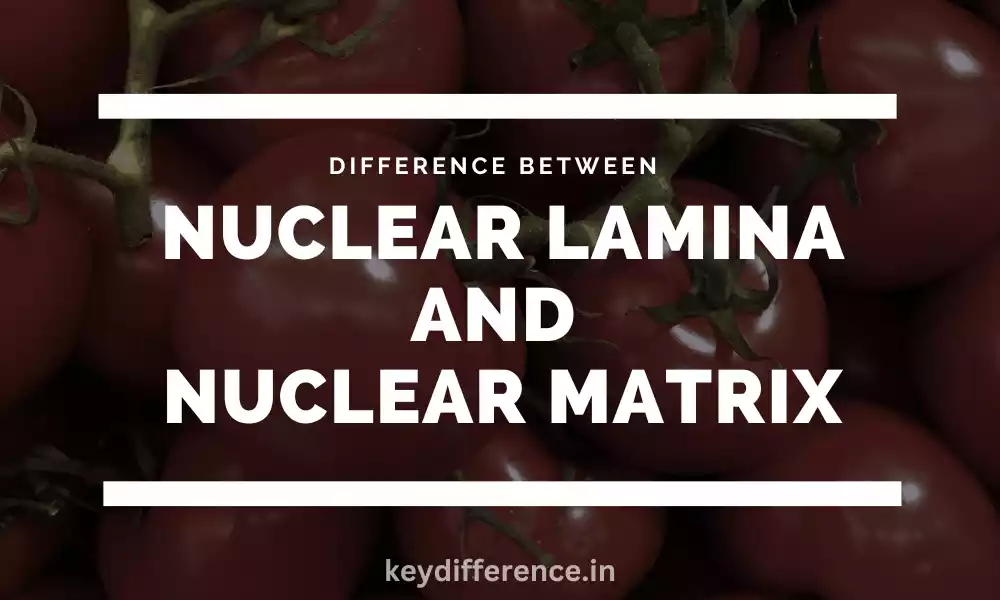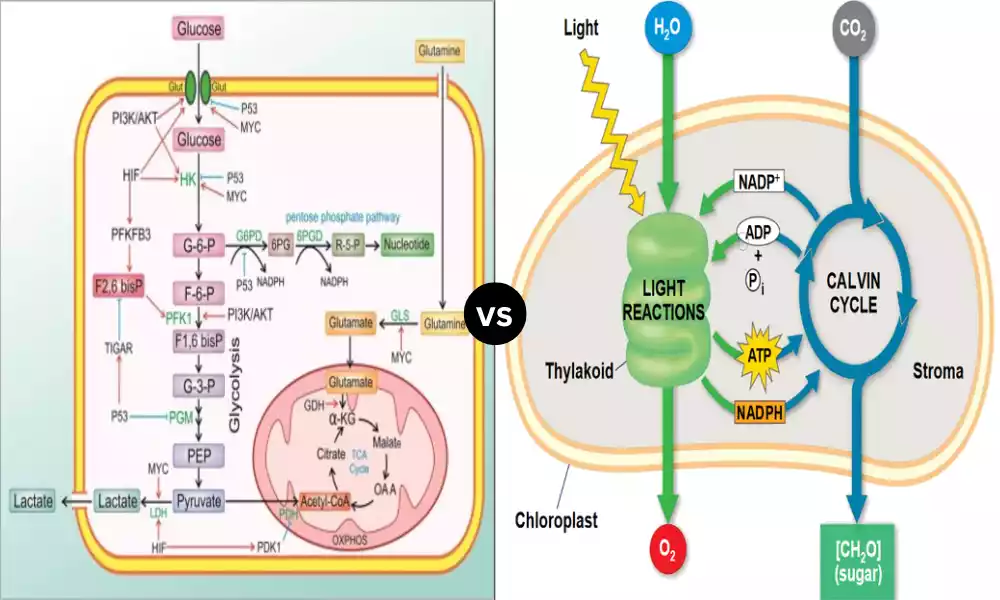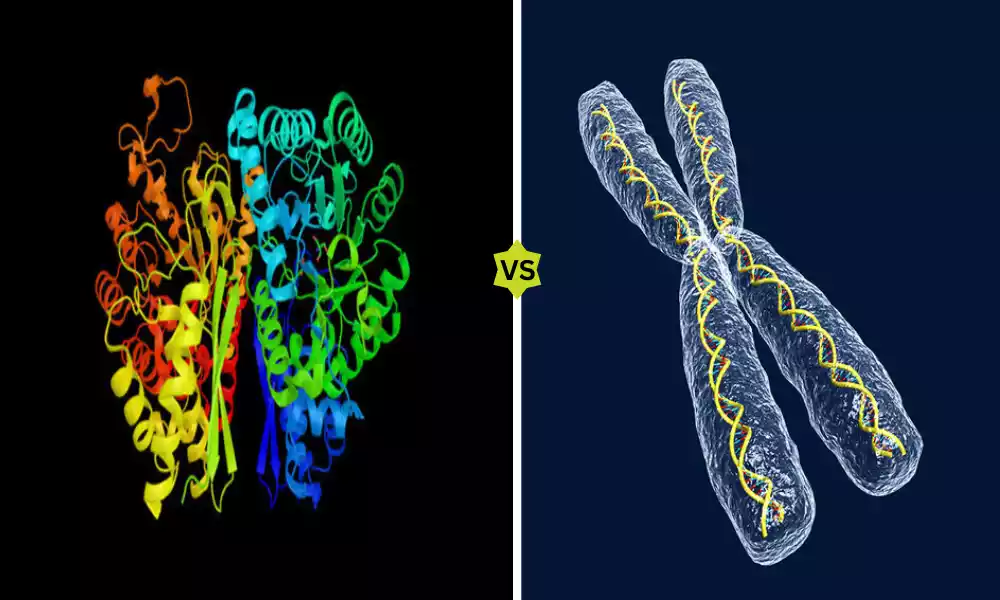Bacillus clausii and Bacillus Subtilis is a distinct species of bacteria that belongs to the Bacillus genus Bacillus. Although they have some similarities because of their taxonomic classification, they have distinct differences in morphology, habitat, physiology as well as genetics and applications.
This outline of content aims to analyze and compare these distinctions and shed light on the distinct nature and function of these bacteria within a variety of environments, from industrial to medical stressing the importance of recognizing their differences.
Explanation of Bacillus clausii
Bacillus clausii is one kind of rod-shaped, Gram-positive endospore-forming bacteria which belongs to the Genus Bacillus. The bacterium is typically found in soils and is widely utilized in probiotic formulations because of its health benefits.
Bacillus clausii is well-known for its capacity to produce resistant spores that allow it to withstand extreme environmental conditions and provide it with a high level of stability across a variety of applications, such as an effective probiotic supplement. It helps keep and restore the health of beneficial microorganisms within the gut as well as improve digestive health.
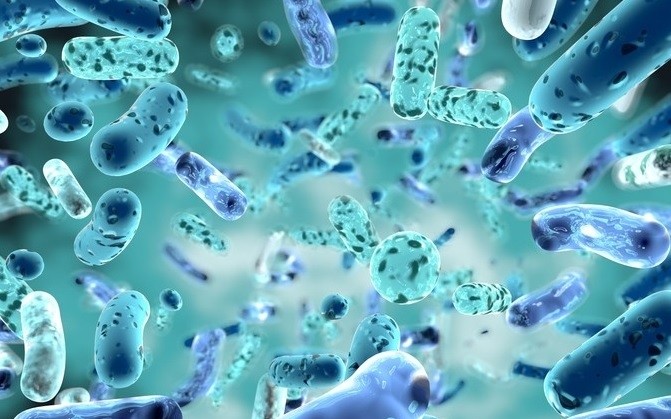
Explanation of Bacillus Subtilis
Bacillus subtilis, sometimes known as “B. subtilis,” is a rod-shaped bacterium with a Gram-positive form within the Bacillus genus. It is typically found in soil as well as decaying plant material as well and in the gastrointestinal tracts of both humans and animals. Bacillus subtilis is well-known for its many applications, with a particular focus on industries and biotechnology.
Bacillus subtilis’s most notable characteristic is its capacity to create endospores that are extremely resistant to harsh environmental conditions. These spores permit the bacterium to thrive in harsh conditions, making it an excellent organism for a variety of purposes for example, enzyme production, and production of antibiotics as well as to serve as a model studying the physiology and genetics of bacterial species.
Apart from biotechnological and industrial applications, Bacillus subtilis has been extensively researched for its capacity as a probiotic that can provide benefits to the digestive system. The use of Bacillus subtilis as a probiotic concentrates on helping to maintain a balanced gut microbiota, and assisting in digestion health.
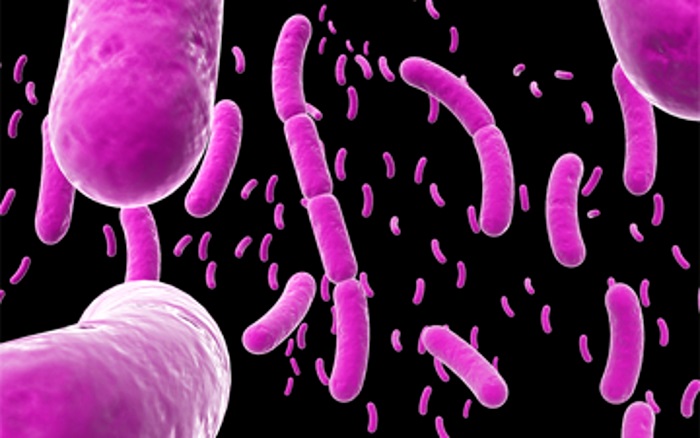
Comparison Table of Bacillus Clausii and Bacillus Subtilis
Here is a comparison table highlighting some key differences between Bacillus Clausii and Bacillus Subtilis:
| Characteristic | Bacillus clausii | Bacillus Subtilis |
|---|---|---|
| Taxonomy and Classification | Genus: Bacillus | Genus: Bacillus |
| Species: Clausii | Species: Subtitles | |
| Morphology | Rod-shaped, Gram-positive | Rod-shaped, Gram-positive |
| Spore Formation | Forms endospores | Forms endospores |
| Natural Habitat | Soil and environment | Soil, decaying material, GI tract |
| Role in the Environment | Soil and environmental | Decomposition, soil ecology, gut microbiota |
| Oxygen Requirements | Facultative anaerobe | Aerobic |
| Nutritional Requirements | Heterotrophic | Heterotrophic |
| Industrial Applications | Limited industrial use | Enzyme production, antibiotic production, bioremediation |
| Medical and Therapeutic Uses | Probiotic supplement | Potential probiotic, antibiotic production, research model |
| Genetic Differences | Genetically diverse strains | Well-studied genetics, model organism |
| Pathogenicity | Generally non-pathogenic | Generally non-pathogenic, rare exceptions |
| Safety and Handling | Considered safe for human use | Generally safe, some strains may produce toxins |
| Notable Characteristics | Used as a probiotic for gut health | Valuable model organism, biotechnological applications |
Please note that while these are some general characteristics that differentiate Bacillus Clausii and Bacillus Subtilis, individual strains within each species may exhibit variations in their properties and applications.
Importance of understanding the differences between the two bacteria
Knowing the distinctions between Bacillus Clausii as well as Bacillus Subtilis is a matter of great importance for a variety of reasons:
- Industrial and biotechnological applications: These bacteria have many applications in biotechnology as well as industry. Knowing their different characteristics can help industry and researchers choose the most appropriate organism for specific processes, for example, the production of enzymes, the production of antibiotics as well and bioremediation. This helps ensure maximum effectiveness and the best results from industrial processes.
- Probiotic and Medical Utilization: Bacillus clausii is often utilized as a probiotic however, Bacillus Subtilis is a potential probiotic with applications. Knowing the difference between them is essential for researchers and healthcare professionals to determine the best probiotic strain to support the health of the gastrointestinal tract and for other therapeutic uses.
- Safety Considerations: The two bacteria generally are regarded as safe However, some bacteria like Bacillus Subtilis may produce toxins. Understanding the different characteristics of the profiles of their security is crucial to evaluating the risk of exposure in particular the context of food and medical applications.
- Researchers as well as Model Organisms: Bacillus Subtilis an organism that has been extensively studied in genetics and microbiology. Understanding its distinctive particularities is crucial to advance research in these areas. However, the genetic variety of Bacillus clausii could provide possibilities for research and new discoveries.
- environmental impact: Bacillus species have important roles in soil ecology as well as environmental processes. Understanding how the bacteria work in their natural environments will aid in the management of environmental issues and restoration efforts.
- Gut Health: When it comes to probiotics knowing the distinctions between these bacteria aids in determining the best strain for improving gut health. This is vital for people looking for probiotic supplements as well as healthcare professionals who recommend them.
- Biocontrol: Bacillus species, comprising Bacillus Clausii as well as Bacillus Subtilis are being studied for their potential for biological control of plants’ diseases. Knowing their unique characteristics can enhance the efficacy of these techniques in agriculture.
In short, knowing the difference between Bacillus Clausii as well as Bacillus Subtilis is vital to making educated decisions across a variety of fields, including biotechnology as well as medicine, research in addition to environmental control. It helps ensure that the correct bacteria is selected for particular applications maximizes their potential benefits and minimizes risk.
Industrial and biotechnological applications
The two Bacillus Clausii along with Bacillus Subtilis are major biotechnological and industrial applications however, they are used in different ways because of their distinct characteristic.
Here are a few most important applications of each Bacillus Subtilis:
Bacillus clausii:
- Probiotics: Bacillus Clausii has been principally used for the creation of supplementation with probiotics. It helps to maintain and improve the good gut bacteria balance that is essential to digestive health.
- Pharmacies: A few strains from Bacillus clausii have been explored for their ability to create antimicrobial substances and enzymes to be utilized in pharmaceutical formulations.
Bacillus Subtilis:
- Enzyme Production: Bacillus Subtilis is known for its ability to create a variety of enzymes. The enzymes are used across a range of industries, including the production of detergents, food processing as well as biofuel production.
- production of antibiotics: Different strains from Bacillus Subtilis produce antibiotics, like subtilin and bacitracin. These antibiotics are used within the industry of pharmaceuticals, specifically in the preparation of antibiotics for topical use.
- Bioremediation: Bacillus Subtilis was used in bioremediation procedures to eliminate and detoxify environmental pollutants, like heavy metals and hydrocarbons.
- Food production: Specific strains from Bacillus Subtilis are used in the production of fermented food items like natto, and a variety of cheeses. They are involved in the development of flavor and also in preservation.
- Research Model: Bacillus Subtilis functions as a useful model organism to study bacteria’s genetics, physiology, and cell-based processes. It has aided in our understanding of the basic biological mechanisms.
- Control by Biological Methods: In agriculture, Bacillus Subtilis-based biopesticides are utilized to combat plant diseases caused by pathogens of various kinds. It functions as a biocontrol agent that protects the crops.
- Bioplastic Production: Certain varieties that belong to Bacillus Subtilis have been engineered to create bioplastics that are sustainable alternatives to conventional plastics.
Knowing the particular features and applications of each bacterium is essential in determining the most suitable strain for biotechnological or industrial processes.
Furthermore, the ongoing research and efforts in genetic engineering are expanding the possible applications of both Bacillus Claudius as well as Bacillus Subtilis in various industries.
Handling and containment considerations
Containment and handling considerations for Bacillus Clausii and Bacillus Subtilis are essential in order to protect the public, avoid accidental environmental releases and ensure compliance with the requirements of regulatory agencies. Although the two bacteria are generally thought to be safe, specific precautions must be considered.
Here are a few key points to consider:
Bacillus Clausii:
- Laboratory Handling: If you are working with Bacillus clausii within a lab setting the standard microbiological procedures should be observed. This includes wearing suitable Personal Protective Equipment (PPE) like laboratory coats gloves and safety glasses.
- Spore Formation: Bacillus Clausii produces endospores that are extremely resistant to environmental stressors. This is why containment is crucial to stop the accidental spreading of the spores.
- Containment Facilities: Based on the size or nature of the task the level of containment can range in the range of biosafety (BSL) 1. BSL 2. The decision to choose a level of containment must be based on a risk assessment for the specific task being carried out.
- Spill Response Laboratories: that work with Bacillus Clausii must be equipped with procedures to respond to spills. These may include decontamination, disinfection, and proper disposal of the contaminated substances.
- Waste disposal: Disposable waste materials that have Bacillus Clausii must be properly autoclaved or other treatment to ensure that spores are removed prior to removal. Local regulations and guidelines of institutions must be adhered to.
Bacillus Subtilis:
- Laboratory Handling: Like Bacillus Clausii Bacillus Subtilis is best handled with normal microbiological practices and the appropriate PPE in laboratory settings.
- Spore formation: Bacillus Subtilis also creates endospores. Therefore, containing is essential to stop the spread of spores.
- Containment Facilities: The level of containment of Bacillus Subtilis may vary depending on the strain in question and the research or industrial use. BSL 1, 2 or BSL 2 confinement levels are generally suitable.
- Spill Response: Laboratories that work with Bacillus Subtilis must have spill response protocols in place. This could comprise disinfection, decontamination and the proper disposal.
- Waste disposal: The waste materials that are contaminated with Bacillus Subtilis should be treated to kill spores prior to disposal. The use of autoclaving, or any other method that is approved must be employed in accordance with local laws.
- Genetic Engineering: In the event that genetically modified varieties that are part of Bacillus Subtilis are used, additional safety considerations could be required. Additionally, compliance with the laws governing Genetically altered species (GMOs) is crucial.
It’s important to keep in mind that the safety guidelines and levels of containment will vary depending on the region and institute.
Professionals and researchers must seek advice from their biosafety and safety committees and follow local guidelines and regulations in the case of working with Bacillus Clausii as well as Bacillus Subtilis, to make sure of safety in handling, containment, and disposal methods.
What are the Similarities Between Bacillus Clausii and Bacillus Subtilis?
Bacillus Clausii, and Bacillus Subtilis Both, belonging to the Bacillus Genus, have many similarities, which include:
- Gram-positive bacteria Bacillus: Subtilis and Bacillus Clausii are both Gram-positive bacteria Bacillus Clausii and Bacillus Subtilis are Gram-positive bacteria. This means that they have the thickest peptidoglycan cell walls which retain the violet crystal staining during Gram staining.
- Rod-Shaped Morphology: Both exhibit an arc-shaped bacillus morphology which is characteristic of a variety of bacteria belonging to the Bacillus genus. Bacillus.
- Endospore Formation: Bacillus clausii along with Bacillus Subtilis can be able to create endospores. These are extremely durable dormant structures that permit bacteria to endure harsh environmental conditions, including heat, dehydration, and extreme pH levels.
- Habitat: They are typically found in soils and other environmental environments and play an important role in the process of recycling nutrients as well as ecological processes.
- Aerobic Growth: Bacillus Clausii and Bacillus Subtilis are aerobic bacteria which means they require oxygen to grow and metabolize.
- Food Requirements: They are heterotrophic bacteria, meaning that they derive their energy and carbon by consuming organic molecules.
- Security: Both species are generally regarded as safe for handling and use by humans and handling, with a low risk of pathogenicity. However, certain Bacillus Subtilis strains may produce toxic substances, and caution should be exercised when choosing the strains to use.
- Potential Biotechnological Applications: Both bacteria have been investigated for industrial and biotechnological applications like the production of enzymes, the production of antibiotics as well and bioremediation.
- Genetic Diversity: Both Bacillus Clausii and Bacillus Subtilis exhibit genetic diversity between different strains. This can be utilized for specific research goals.
Although these are similarities it’s important to recognize it is important to note that Bacillus Clausii as well as Bacillus Subtilis are also distinguished by significant distinctions regarding their functions, biological makeup, and distinct characteristics, as we’ve previously discussed.
Understanding their commonalities as well as differences is crucial to use their potential in a variety of settings.
Reference Books
Certainly! Here are some reference books covering a wide range of topics:
- “Encyclopedia of Microbiology” by Moselio Schaechter, Joshua Lederberg, and Elio Schaechter
- This comprehensive reference work covers all aspects of microbiology, including bacteriology, virology, mycology, and microbial ecology.
- “Brock Biology of Microorganisms” by Michael T. Madigan, Kelly S. Bender, Daniel H. Buckley, and W. Matthew Sattley
- A widely used textbook and reference for microbiology, it provides in-depth coverage of microbial biology and ecology.
- “Molecular Biology of the Cell” by Bruce Alberts, Alexander Johnson, Julian Lewis, et al.
- This classic textbook covers cell biology and molecular biology in great detail, with a focus on eukaryotic cells.
- “Lehninger Principles of Biochemistry” by David L. Nelson and Michael M. Cox
- An authoritative text on biochemistry, providing a thorough understanding of the principles and molecules that make up life.
- “Microbiology: An Evolving Science” by Joan L. Slonczewski and John W. Foster
- This textbook delves into the world of microbiology, exploring the latest developments in the field and their impact on our understanding of microorganisms.
- “Environmental Microbiology: Fundamentals and Applications” by Ian L. Pepper, Charles P. Gerba, and Terry J. Gentry
- A comprehensive guide to environmental microbiology, covering topics such as microbial ecology, biogeochemical cycling, and environmental applications.
Conclusion
Bacillus Clausii as well as Bacillus Subtilis have two distinct bacteria species belonging to the Bacillus Genus, each with distinct features, applications, and importance. Knowing the distinctions between the two bacteria is essential to making informed choices in a range of areas, including biotechnology as well as medicine, research in addition to environmental management.
It permits the efficient and safe use of their capabilities and highlights their importance in developing technology and science while also enhancing well-being of the humans and the environment.

